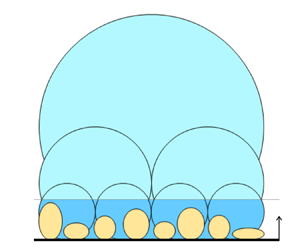Article contents
Wall-attached structures in a drag-reduced turbulent channel flow
Published online by Cambridge University Press: 06 June 2022
Abstract

We explore wall-attached structures in a drag-reduced turbulent channel flow with the Navier slip boundary condition. Three-dimensional coherent structures of the streamwise velocity fluctuations (u) are examined in an effort to assess the influence of wall-attached u structures on drag reduction. We extract the u clusters from the direct numerical simulation (DNS) data; the DNS data for the no-slip condition are included for comparison. The wall-attached structures, which are physically adhered to the wall, in the logarithmic region are self-similar with their height and contribute to the presence of logarithmic behaviour. The influence of the streamwise slip on wall-attached structures is limited up to the lower bound of the logarithmic region. Although wall-attached self-similar structures (WASS) slide at the wall, the formation and hierarchy of WASS are sustained. Weakened mean shear by the streamwise slip results in a diminution in the population density of wall-attached structures within the buffer layer, leading to sparse population of WASS. In contrast, the space occupied by WASS in the fluid domain increases. The streamwise slip induces long tails in the near-wall part of WASS, reminiscent of the footprints of large-scale motions. Both a decrease in the population density of WASS and a reduction in the density of skin friction of WASS are responsible for the overall drag reduction.
JFM classification
- Type
- JFM Papers
- Information
- Copyright
- © The Author(s), 2022. Published by Cambridge University Press
References
- 4
- Cited by



